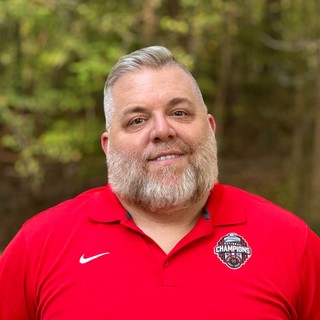After my post a few weeks ago debunking myths about the South, the idea came to me to look into different inventors from Dixie.
I found that, as with many regions of the country, most Southern inventors came up with products we don’t use anymore or don’t really think about. But some really fascinating inventions and innovations originated in the minds of Southern men and women.
From agricultural advances to technological breakthroughs to revolutionary beverages, the South can claim quite a few innovations. Here are fourteen of them…
14. Robert and Cyrus McCormick, Shenandoah Valley, Virginia
Even with all the advances in modern technology these days, farming still makes up an important portion of our economy. Many of the advances in tractor technology owe a debt to a father and son from Virginia who perfected mechanical reaper design, speeding up farm work tremendously.
Robert McCormick developed an idea for a horse-drawn reaper and asked his son Cyrus to help him improve it. Cyrus patented the machine in 1831, but Luddite tendencies among farmers of the era and tight competition with the Hussey reaper prevented the McCormick reaper from catching on for about 20 years.
Cyrus and his brother formed McCormick and Brothers, later the McCormick Harvesting Machine Company, to sell their product. The company would become part of International Harvester in 1902.
13. Garrett Morgan, Paris, Kentucky
Garrett Morgan was born in Paris, Kentucky, to former slaves. He came up with many inventions, including an early traffic signal, and he began a successful business selling a hair-straightening cream which he invented. But he wound up giving his most fascinating invention a demonstration that literally saved lives.
In the early 1910s, Morgan witnessed a group of firefighters struggling with smoke inhalation, so he began to develop a gas mask that would allow rescuers to more effectively deal with conditions. Other gas masks of the era were difficult to don and did not work well, but Morgan’s device was both simple and effective.
In 1916, a tunnel under Lake Erie exploded, trapping a group of men. Morgan and his brother arrived in the middle of the night with some of his masks, and they began to rescue the men. In all, Morgan and others saved 32 lives and were even able to recover the bodies of the men who died.
12. Dr. Michael DeBakey, Lake Charles, Louisiana
The son of Lebanese immigrants, Dr. Michael DeBakey practiced medicine until just before his death at age 99. DeBakey didn’t so much invent a particular device or procedure as he paved the way for some procedures and perfected others.
DeBakey devised the Mobile Army Surgical Hospital (MASH) unit and invented the roller pump, one component of the heart-lung machine. He also was the first doctor to use an external heart pump successfully during surgery. He developed a particular form of angioplasty as well as a method to film surgeries as they took place. DeBakey missed out on being the first American doctor to implant an artificial heart into a patient when fellow doctor Denton Cooley performed the surgery while DeBakey was out of town.
Dr. DeBakey’s reputation as a surgeon grew to the point where he performed risky surgeries on heads of state such as Boris Yeltsin. He received the Presidential Medal of Freedom, the National Medal of Science, and the Congressional Gold Medal.
11. Bette Nesmith Graham, Dallas, Texas
If you’ve ever handwritten something, made a mistake, and reached for a bottle of correction fluid, you benefitted from the innovation of a secretary turned inventor from Texas.
Shortly after World War II, a young secretary named Bette Graham experienced continued frustration with the newfangled electric typewriters and the mistakes she made using them. She watched her fellow secretaries use paint to correct their mistakes and wondered if there was a better way.
Graham developed a water-based tempera paint that worked better than anything else. In 1956, she began to market her product, and by 1967, Liquid Paper sold over a million units per year. Graham had one other claim to fame – her son, Michael Nesmith, became one of the Monkees.
10. Waldo Semon, Demopolis, Alabama
If you’ve used a vinyl raincoat to keep dry, walked on a vinyl floor at home, work, or school, or took a shower behind a vinyl curtain, you have Alabaman Waldo Semon to thank.
Two German scientists over a period of four decades developed polyvinyl chloride (PVC). The funny thing was, nobody figured out a use for it and considered the product worthless. In 1926, Waldo Semon became obsessed with trying to figure out how to bind rubber to metal, and he thought PVC held the key. He developed a way to plasticize PVC and received two patents for his “Synthetic Rubber-like Composition and Method of Making Same; Method of Preparing Polyvinyl Halide Products.”
Semon want on to invent vinyl golf balls and shoe heels as well and lived to the ripe old age of 101. Today, vinyl is the second most produced plastic in the world. Companies use vinyl in hundreds of products, and they owe it all to Waldo Semon.
9. C.D. Atkins, Winter Haven, Florida
Most people don’t realize how much those cans of concentrated orange juice revolutionized Florida’s citrus industry. Love it or hate it, frozen orange juice helped make Florida an agricultural boom state in the mid-20th century, and native son C.D. Atkins was responsible.
Cedric Donald Atkins was the only son of a telegraph operator and a teacher. He had designs on being a doctor, but he left school after obtaining a bachelor’s degree and became a research scientist for the Department of Agriculture, as well as running a small orange grove. He received patents for seven items, but the invention that meant the most belonged to the federal government.
He initially developed the method for freezing concentrated orange juice for the military, but when Florida’s orange juice growers realized how efficient the process was, they took hold of it and greatly expanded the industry. So the next time you pick up a can of frozen orange juice, think of C.D. Atkins.
8. Irving Silver, Sandy Springs, Georgia
It’s not often that an inventor develops a product that NASA takes into space, but Georgia’s own Irving Silver can make that claim to fame. Silver had already built a successful career as a car salesman when he stumbled on the idea to use turbines in an electric shaver that could shave wet or dry.
Silver drew his ideas out, tested hundreds of prototypes, and applied for and received patents for his device. He formed his own company to continue to improve on his ideas.
Today, virtually every shaving company employs Silver’s prototype, and NASA has employed Silver’s shaver as the best way for astronauts to get a close, comfortable shave. Silver went on to invent a machine to allow travelers to shave at airports.
7. Charles Alderton, Waco, Texas
6. John Pemberton, Atlanta, Georgia
5. Caleb Bradham, New Bern, North Carolina
4. Claud Hatcher, Columbus, GA
People could debate the value of fizzy, sugary, syrupy colas forever, but there’s no denying how ubiquitous — and well-loved — they are. Though soda fountains came about in the early 1800s, cola soft drinks didn’t make an impact for several years. Three major companies and a smaller-scale player all started up in Georgia, North Carolina, and Texas within a few years of each other.
In 1885, a pharmacist from Waco, Texas, named Charles Alderton loved the smell of the fruit syrups at the soda fountain at the drugstore where he worked. He decided to create a carbonated drink that captured that smell – Dr. Pepper was born.
Atlanta pharmacist John Pemberton developed Coca-Cola in 1886, beginning with a proprietary syrup recipe that once included cocaine as an ingredient. Two years later, Pemberton sold his creation to a group of businessmen led by Asa Candler, who took Coke outside of Atlanta, where the rest is history. Not too far southwest, in Columbus, a drugstore owner named Claud Hatcher developed his own beverages for his soda fountain less than two decades later – one of his first creations was a cola called “Chero-Cola,” which became RC Cola.
Drug store owner Caleb Bradham developed his own cola in 1893 at his store in New Bern, North Carolina. First christened “Brad’s Drink,” the beverage contained the digestive enzyme pepsin, so Bradham changed the name to Pepsi-Cola a few years later. At one time Pepsi’s ad campaigns referred to the drink as “delicious and healthful.”
Today, these companies are a multibillion dollar industry. But they all originated in small stores, and they all began in the South.
2. and 3. Bill Colwell and Dr. Sam Hurst, Oak Ridge, Tennessee
We know of the role that Texas played in the technological revolutions of the 1970s and 80s, but a start-up company out of Tennessee first developed an intriguing technology that has become commonplace today.
A group of investors led by Dr. Sam Hurst, a professor on leave from the Oak Ridge National Laboratory, founded Elographics, Inc. in 1971 to develop an electronic device to draw graphs. Their initial product, the Elograph, won an award in 1973 as one of the 100 Most Significant New Technical Products of the Year.
In 1977, Hurst and co-founder Bill Colwell received a grant from Siemens to build a glass screen that could be activated by touch. The AccuTouch product made its way into a screen and paved the way for our modern touchscreen monitors and interfaces for smartphones and tablets. Today the company is Elo Touch Solutions, and they are still one of the premier manufacturers of touchscreen products.
1. Malcom McLean, Maxton, North Carolina
If you’ve traveled anywhere near a port you’ve seen the ships with seemingly endless stacks of metal containers on them. If you’ve watched a train along its tracks, you’ve noticed the metal boxes, sometimes stacked two high, and you’ve passed them on the backs of tractor trailers. Maybe you’ve read about some of those cool new houses people are building out of shipping containers. As ubiquitous as shipping containers are, their inventor lived his life in relative obscurity — even though he died a multimillionaire. You may not have heard of Malcom McLean, but you see his invention every day.
Malcom McLean was born into a farming family in Maxton, NC. As a young man, he bought a truck to transport farmers’ goods to markets, and his business expanded rapidly. He watched dock workers unloading and reloading cargo, and he came up with an idea to streamline the process — what if the container itself could be taken off the truck and placed on the ship? McLean invented the shipping container, formed the Sea-Land company, and grew it aggressively. His invention revolutionized the logistics industry, and he sold Sea-Land when he retired for a cool $160 million.
*******
Don’t forget to check out Chris’s previous Southern list and June’s most popular article at PJ Lifestyle:









Join the conversation as a VIP Member